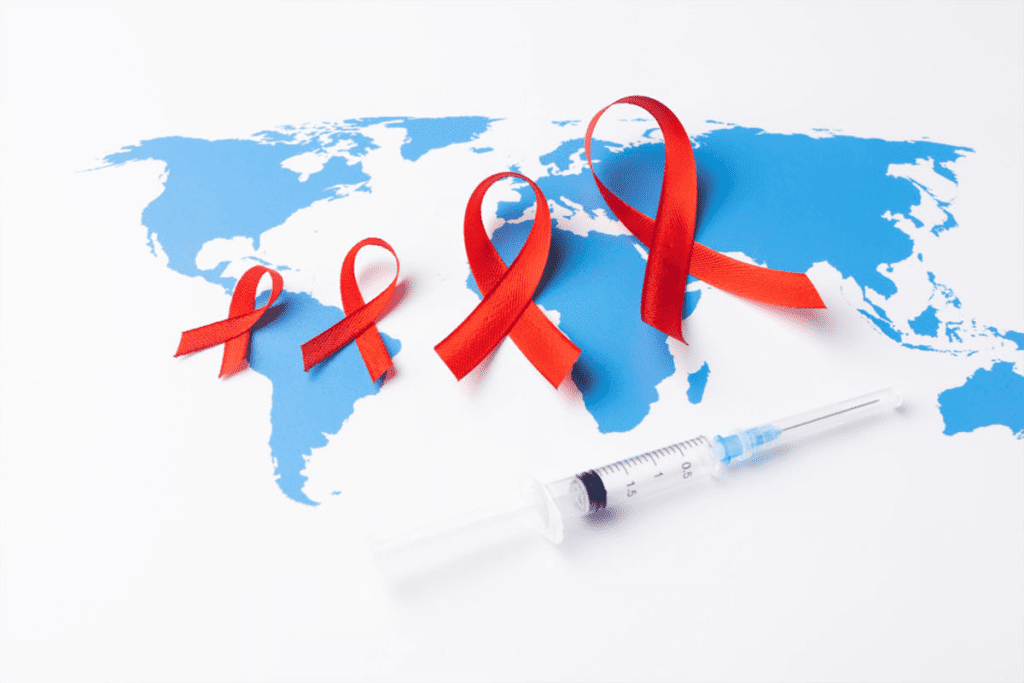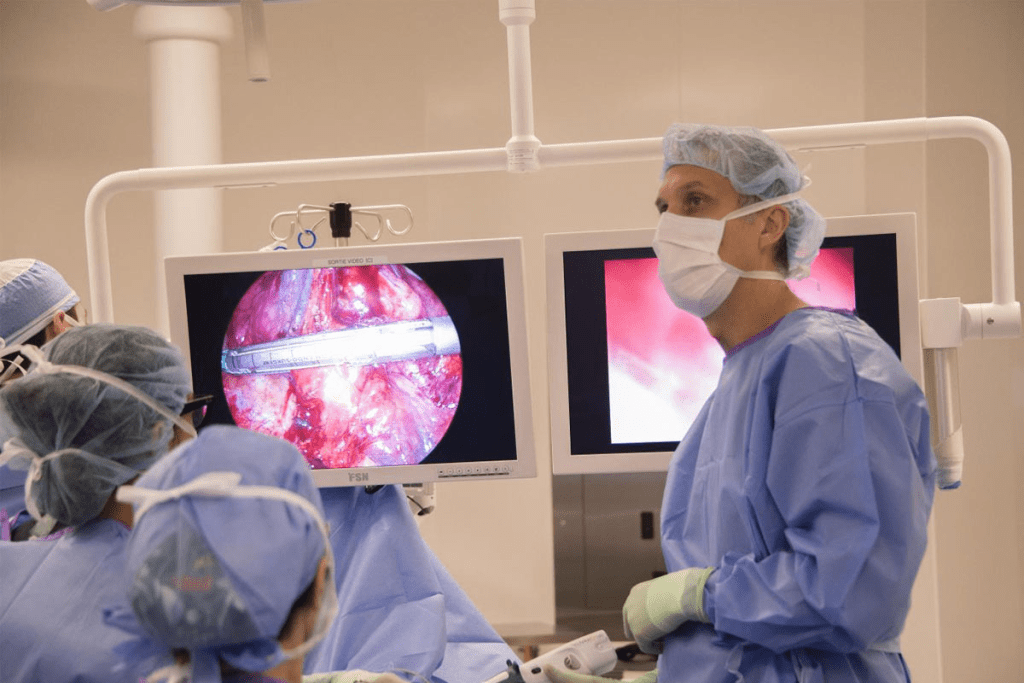Last Updated on November 12, 2025 by
Cancer treatment has changed a lot over the years. Now, we use a complete approach to fight cancer. The five pillars of modern cancer therapy are key in this fight.

These pillars include surgery, radiotherapy, chemotherapy, molecularly targeted therapy, and immunotherapy. They offer a wide range of ways to treat cancer. This helps improve patient results and life quality. Knowing about these pillars helps patients and doctors choose the best cancer therapeutic plans.
Understanding the pillars of cancer therapy helps make treatment choices.
The global burden of cancer is growing fast. This means we need better and new ways to treat it. Cancer is a top cause of death worldwide, with the World Health Organization (WHO) saying it caused nearly 10 million deaths in 2020. This shows we must keep working on new cancer treatments.
Cancer affects some places and people more than others. The International Agency for Research on Cancer (IARC) found 18.1 million new cancer cases in 2018. The number of cancer cases is expected to keep going up. This growing burden shows we need effective and easy-to-get cancer treatments.

The medical world has come up with a new way to fight cancer. It’s called the five pillars of cancer therapy. These include surgery, radiotherapy, chemotherapy, molecularly targeted therapy, and immunotherapy. This approach helps doctors tailor treatments to each patient, making care better and life quality higher. The five-pillar framework is a big step forward in cancer care, giving hope to those affected by it.
Surgery is key in fighting cancer. It removes tumors and nearby tissue. This helps lower the chance of cancer coming back.

Oncologic surgery covers many procedures for cancer patients. These include:
Each surgery type is vital in managing cancer. It shows how important surgery is in cancer care.
Surgery is a strong cancer treatment, but it has limits. The tumor’s size, location, and the patient’s health matter a lot.
Important things to think about include:
Healthcare teams look at these factors to decide on surgery. This helps use surgery’s benefits while reducing risks.
Radiation therapy is a key treatment that has changed cancer care. It focuses on killing diseased cells without harming healthy ones. This is very important in fighting cancer, as it aims to remove cancer cells without hurting the patient too much.
Radiation therapy uses high-energy particles or waves to kill cancer cells. It works by damaging the DNA in these cells, causing them to die. “Radiation therapy is a critical component of cancer treatment, controlling tumor growth and easing symptoms,” experts say.
New methods in radiation therapy have made treatments more precise and effective. Techniques like IMRT and SBRT allow for radiation to be shaped to fit tumors. This helps protect healthy tissues around the tumor.
About 50% of cancer patients get radiation therapy. This shows how important radiotherapy is in cancer treatment. It can be used alone or with other treatments like surgery and chemotherapy.
Radiotherapy’s ability to target diseased cells while preserving healthy tissue makes it a valuable treatment option. As cancer treatment evolves, radiotherapy will likely keep playing a big role. Research is ongoing to make treatments better for patients.
“The integration of radiotherapy into cancer care plans has greatly improved patient outcomes, showing its importance as a treatment option.”
Chemotherapy is a key cancer treatment, mainly when it has spread. It targets and kills cancer cells in different parts of the body. This makes it a vital part of cancer therapeutic plans.
Chemotherapy uses drugs that stop cancer cells from growing and dividing. These drugs fall into several types, like alkylating agents and antimetabolites. Knowing how these drugs work helps doctors pick the best treatment for each patient.
Chemotherapy plans vary based on the cancer type, stage, and patient health. Some use many drugs together to work better. Others are given before the main treatments to shrink tumors. While plans are often set, they can be adjusted for each patient.
Chemotherapy fights cancer but can harm healthy cells too. This can lead to side effects like hair loss and stomach problems. It’s important to manage these side effects to keep patients’ quality of life good. Doctors use supportive care and adjust treatment plans as needed.
The rise of molecularly targeted therapy is changing how we fight cancer. These treatments aim at the root causes of cancer, unlike old methods. This makes them more effective and precise.
These therapies focus on specific markers on cancer cells. This approach has greatly improved cancer treatment.
Small molecule inhibitors block enzymes or proteins that help cancer grow. Imatinib is a famous one used for chronic myeloid leukemia (CML) and gastrointestinal stromal tumors (GIST).
They are made to target cancer cells only, reducing harm to healthy cells. This means fewer side effects. Plus, they’re easy to take because they’re pills.
Monoclonal antibodies are another key part of targeted therapy. They’re made to find and destroy cancer cells. Rituximab and Trastuzumab are used for non-Hodgkin’s lymphoma and HER2-positive breast cancer.
These antibodies have made treatments better for many patients. They offer a more focused approach with fewer side effects than traditional chemotherapy.
Targeted therapy is great because it helps patients live longer and feel better. It attacks cancer cells without harming healthy tissues. This leads to fewer side effects and a better life for patients.
As research keeps going, we’ll see even more targeted treatments. This means better chances for cancer patients to survive and thrive.
Immunotherapy is a big step forward in fighting cancer. It uses the body’s immune system to attack cancer cells. This method has shown great promise in treating different cancers by boosting the body’s defenses.
Immunotherapy works by making the immune system better at finding and destroying cancer cells. It’s a targeted way to fight cancer, which can help protect healthy cells.
There are several types of immunotherapeutic agents, each working in its own way. These include:
Immunotherapy has made big strides in treating some cancers. For example, checkpoint inhibitors have been very effective against melanoma, non-small cell lung cancer, and renal cell carcinoma. CAR-T cell therapy has also changed the game for some blood cancers, giving patients a chance at a cure.
“The advent of immunotherapy has transformed the landscape of cancer treatment, giving new hope to patients with few options before.”
Thanks to its success in trials, immunotherapy has led to more FDA approvals. As research continues, we can expect to see more uses for immunotherapy. This will give patients more options for treating different cancers.
As immunotherapy keeps growing, we’ll likely see new treatments and ways to use them together. This could lead to even better results for patients.
Healthcare providers can create more effective treatments by combining the five pillars of cancer therapy. This method uses surgery, radiotherapy, chemotherapy, targeted therapy, and immunotherapy together. It aims to improve patient outcomes.
Cancer is complex, needing a treatment plan that covers all angles. Multidisciplinary tumor boards are key in this effort. These teams include experts from different fields of oncology. They work together to design personalized treatment plans.
Multidisciplinary tumor boards are vital for deciding the best treatment for patients. They bring together specialists to review cases and suggest the best treatment plan. This approach increases the chances of a successful outcome.
The benefits of these boards include:
Choosing between sequential and concurrent therapy is a key decision in treatment planning. Sequential therapy means treatments are given one after another. Concurrent therapy involves giving multiple treatments at the same time.
The choice depends on the cancer type, stage, patient health, and possible side effects. Research shows concurrent therapy can be more effective in some cases. But it also raises the risk of side effects.
In the end, a multidisciplinary tumor board should make this decision. They consider each patient’s unique situation.
New therapies are changing oncology, bringing hope to patients everywhere. These new treatments and technologies are making cancer care better.
New cancer treatments aim to fix what old ones can’t. Personalized neoantigen-based therapies and oncolytic virus therapies are showing great promise. They’re being tested in early clinical trials.
These advances come from better genomic sequencing and immunotherapy. They help make treatments more targeted and effective.
Artificial intelligence (AI) is helping pick treatments in oncology. AI looks at lots of data, like genes and medical history. It finds the best treatment plans for each patient.
AI in treatment selection is set to boost patient results. It gives doctors insights to make better choices.
The world of cancer treatment is always changing. This is thanks to discoveries in medical science and technology. The five main ways to fight cancer – surgery, radiotherapy, chemotherapy, targeted therapy, and immunotherapy – are key to treating cancer well.
Each method is important for different types of cancer. Using them together has made treatments better and helped more people survive.
At livhospital.com, we focus on using these methods to give patients the best care. The future of cancer treatment looks bright, with new treatments and the use of artificial intelligence coming soon.
As we move forward, our goal is to keep improving care for cancer patients. By using the latest in cancer treatment and staying updated, we can help those with cancer get the best care possible.
The five pillars are surgery, radiotherapy, chemotherapy, molecularly targeted therapy, and immunotherapy.
Surgery removes the tumor and affected tissues. It mainly focuses on local tumor control.
Radiotherapy changes the DNA of diseased cells, stopping them from reproducing. About 50% of cancer patients get radiotherapy.
Chemotherapy targets fast-growing cancer cells. It helps manage side effects and toxicity.
Molecularly targeted therapy targets specific cancer cell markers. It improves survival rates and reduces toxicity compared to traditional chemotherapy.
Immunotherapy boosts the body’s defenses against cancer. It leads to lasting remissions in melanoma, non-small cell lung cancer, and some blood cancers.
The five pillars are combined through multimodal treatment strategies. This involves teamwork and using therapy approaches together.
New therapies include next-generation treatments and the use of artificial intelligence to choose treatments. These are set to change cancer care a lot.
Subscribe to our e-newsletter to stay informed about the latest innovations in the world of health and exclusive offers!